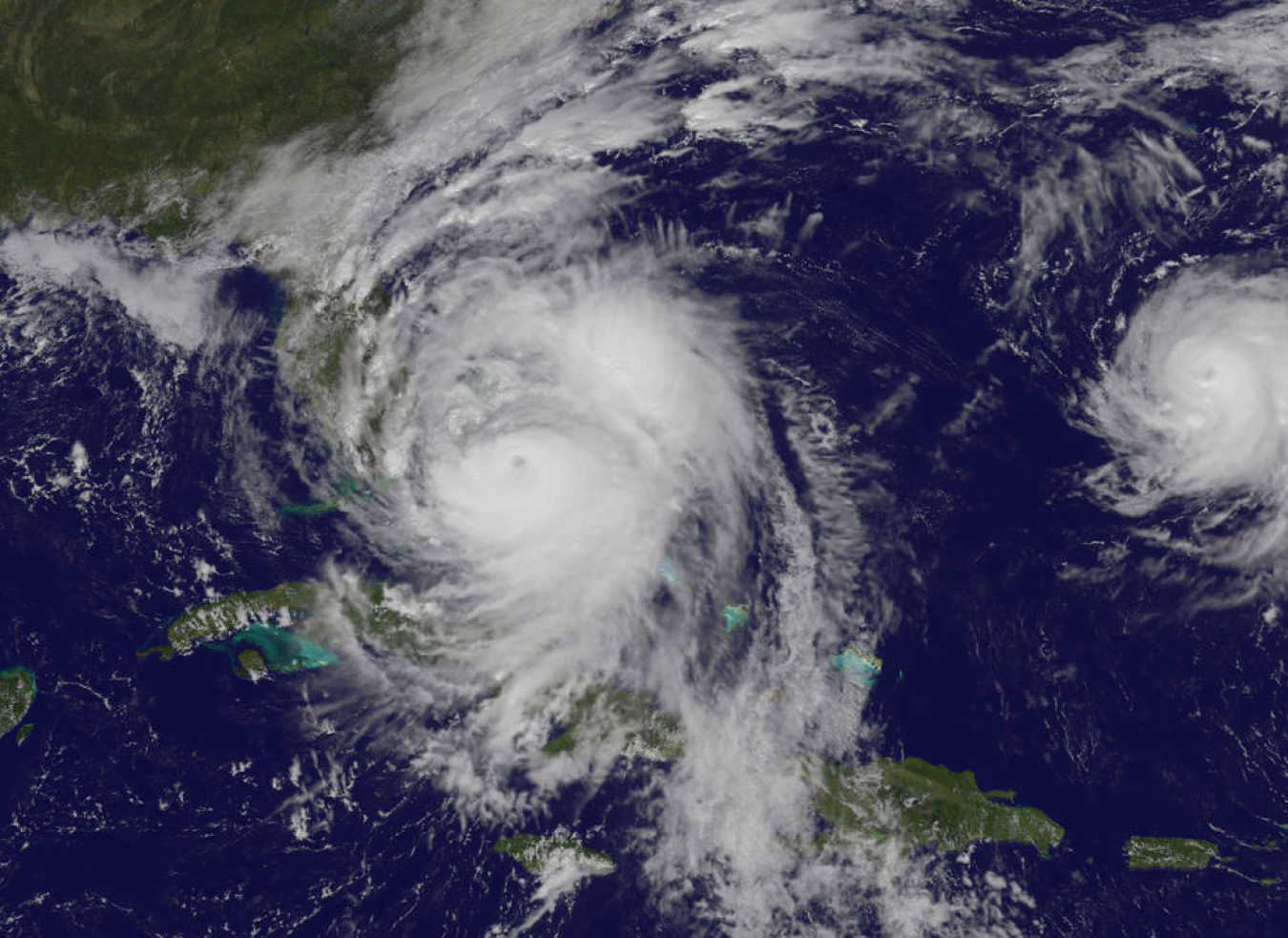June 1 marks the beginning of hurricane season. If a major energy supply disruption were to occur as a result of a hurricane, the Department of Energy (DOE) would play a vital role, coordinating with other Federal agencies and the energy sector to prep...
May 31, 2017
GOES satellite image of Hurricane Matthew. Credit NASA.
June 1 marks the beginning of hurricane season. If a major energy supply disruption were to occur as a result of a hurricane, the Department of Energy (DOE) would play a vital role, coordinating with other Federal agencies and the energy sector to prepare for and recover from such an event. The Office of Electricity Delivery and Energy Reliability (OE) leads DOE’s efforts in the Department’s role as the Federal Sector-Specific Agency supporting Emergency Support Function 12 (ESF-12) for the Energy Sector under Presidential Policy Directive- 8: National Preparedness. In the event of an emergency, OE manages responders from across DOE that specialize in energy infrastructure and systems. These responders can be quickly activated and deployed to the disaster site. During an event, OE coordinates with deployed personnel, other DOE offices, and Federal, state, and local agencies and industry in order to respond to the emergency. If a hurricane impacts the United States, DOE will also publish Situation Reports that provide details on the storm’s impact to the energy sector and the recovery and restoration activities being undertaken.
As this season approaches, being prepared is crucial. The Division within OE that I lead – Infrastructure Security and Energy Restoration (ISER) – has been preparing for this year’s hurricane season in a number of ways. Our partnerships with industry and Federal, state, and local officials are vital for being ready before a storm approaches. Earlier this month, I met with government and industry officials in the energy sector on security, resiliency, and emergency preparedness and response. At the end of May, we held the Clear Path V Table Top Exercise, the next annual iteration of ISER’s flagship exercise series. This event provided a forum for Federal, state, local, and industry stakeholders to openly discuss and identify solutions to issues impacting the Nation’s energy infrastructure before, during, and after a disaster. The scenario-based exercise allowed participants to test their current emergency plans and determine gaps in addressing energy emergencies.
Another important action we are taking this month is expanding access to the EAGLE-I tool to include emergency operations centers and energy emergency assurance coordinators in all 50 states and Washington, DC. This will help more local responders facilitate electric sector situational awareness in their regions and accelerate restoration. EAGLE-I is an interactive geographic information system that provides capabilities for monitoring energy infrastructure assets, reporting energy outages, displaying potential threats to energy infrastructure, and coordinating emergency response and recovery. We are also adding a new page to the OE website that provides detailed information about energy sector emergency response waivers including hours of service, safety, fuel blend, and Jones Act; points of contact at the appropriate Federal agencies; and links to the various forms.
As the National Oceanic and Atmospheric Administration (NOAA) and the Federal Emergency Management Agency (FEMA) will tell you, it is essential that you and your family be ready before a hurricane approaches. For example, it’s important to know that the hazards of hurricanes can include storm surges, heavy rainfalls, inland flooding, high winds, tornadoes, and rip currents. The NOAA and FEMA “Are You Ready” websites are invaluable sources of information. Another valuable resource is the Community Guidelines for Energy Emergencies section of the OE website. Because every emergency is different, it is important for your safety that you follow the directives of your state and local emergency management authorities and local utilities.
To learn more about OE’s role in facilitating recovery from disruptions to the energy supply, visit the energy assurance section of the OE website.


